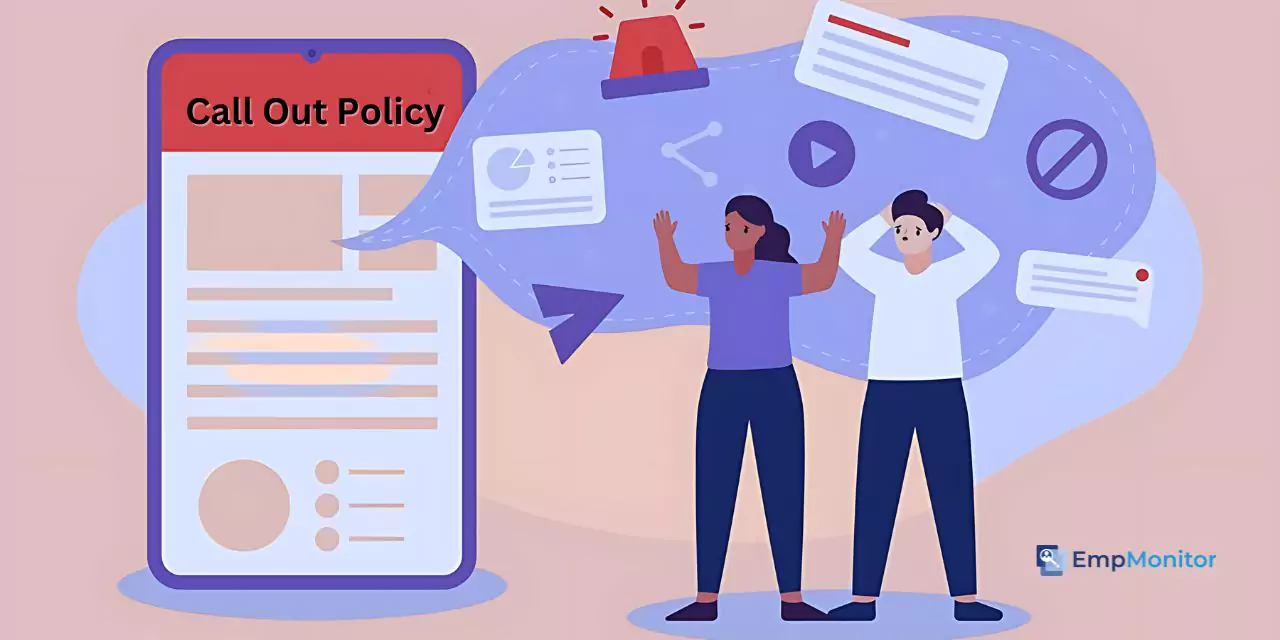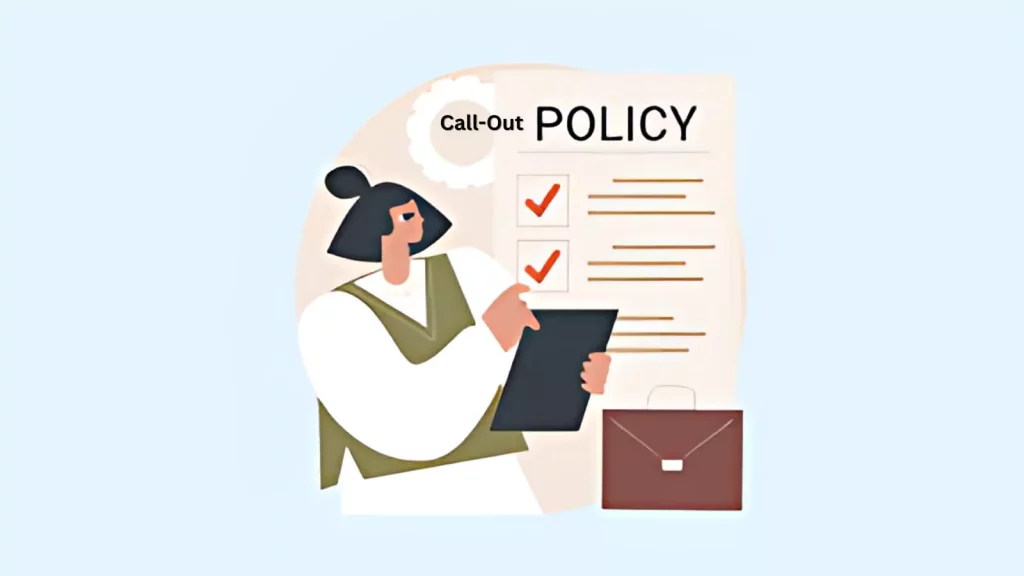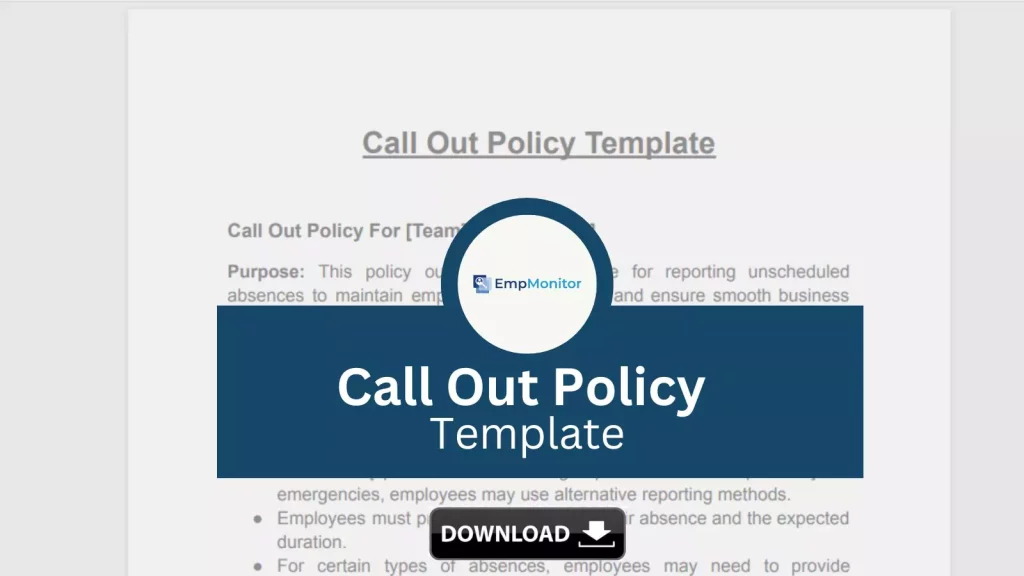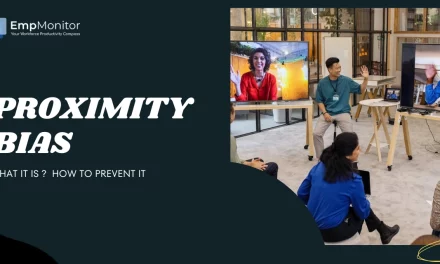Creating an effective call out policy is crucial for maintaining smooth business operations while ensuring employee and employer fairness. A well-structured policy helps manage unexpected absences, providing clear guidelines for when and how employees should notify their supervisors if they can’t make it to work. It also sets expectations for the consequences of unreported or frequent absences, helping to reduce disruptions and maintain productivity.
This policy is essential for planning, scheduling, and covering shifts efficiently- for businesses. For employees, it offers a transparent framework that protects their rights while emphasizing their responsibilities. By developing a comprehensive call out policy, companies can strike the right balance between supporting their workforce and safeguarding their operational needs.
This guide will walk you through the key elements to consider when crafting a call out policy tailored to your business needs.
LISTEN TO THE PODCAST NOW!
What Is A Call Out Policy?
A call out policy is a set of guidelines designed to manage employee absences, late arrivals, or other situations where employees cannot attend work as scheduled. Implementing a call-out policy is crucial for several reasons:
Ensures Fairness: A policy provides uniform guidelines for all employees, helping to prevent favoritism and fostering a healthier workplace environment.
Fosters Accountability: When an employee misses a shift, it often means their colleagues- need to pick up the slack. Adhering to the workplace policy shows that the employee recognizes their impact on the team and is prepared to support their coworkers if needed.
Minimizes Disruptions: Even valid absences can disrupt workflows, especially if the absent employee is responsible for critical tasks. Providing advance notice, even if it’s just an hour, allows the team to adjust their plans and avoid potential delays.
Key Elements Of An Effective Call Out Policy
No call out policy is perfect, but businesses should try to be as clear as possible- when creating one. Here are the key parts you should include to make your policy more effective.
Clear Definitions And Expectations:
Ambiguity in definitions and expectations can lead to confusion.
For Example, instead of stating, “Employees must report their absences before their shift starts,” specify, “Employees must report absences at least one hour before their shift begins.”
This clear, quantitative guideline helps the team adapt to sudden changes and ensures everyone understands the exact timing requirements.
Detailed Procedures For Reporting Absences:
To streamline the reporting process, clearly outline how and where absences- should be reported. Specify a particular communication channel, like a team group or an online form. Indicate the reporting hierarchy, starting with the immediate supervisor and escalating if they are unavailable. Also, include provisions for exceptions, such as emergencies, where reporting via personal contact might be necessary.
Fair Consequences For Policy Violations:
Consequences should be fair and proportional, aimed at deterring no-shows without being excessively punitive.
Consider factors like the employee’s history, the nature of the absence, and any extenuating circumstances when determining appropriate actions.
For instance, a first-time absence due to a medical emergency should be handled differently from repeated unexplained absences.
To ensure your call-out policy is effective and equitable, it’s crucial to maintain clarity, streamline procedures, and apply fair consequences. By addressing these key elements, you can foster a more organized and responsive work environment, reducing misunderstandings and promoting accountability in attendance.
Leveraging advanced tools can further enhance your efforts. For instance, tools like EmpMonitor offer a comprehensive attendance monitoring solution that simplifies the tracking of manual attendance and leave. Its paperless processes save time, while the centralized dashboard provides valuable insights and ensures data accuracy and compliance. It streamlines HR functions and facilitates the efficient distribution of online payslips based on attendance records.
Remember, the goal is to create a policy that supports the organization’s needs and employees’ well-being, ultimately contributing to a more productive and harmonious workplace.
How To Create A Call Out Policy: A Step-By-Step Guide
Evaluate Your Business Needs
Every organization has unique needs, influenced by factors such as industry type or work model.
For example, a healthcare provider may require stricter timelines and less scheduling flexibility due to the urgent nature of their work. Conversely, a remote software team with asynchronous schedules might benefit from a more flexible approach. Consider:
- The impact of an employee’s unplanned absence on the team
- Your team’s ability to adjust to staffing shortages
- Skill coverage and redundancy
- The most suitable individuals for managing absences
- The advantages of remote work arrangements
Draft The Policy
Typically, human resources teams handle the drafting of call-out policies due to their expertise in the nuances involved. It’s crucial to align leadership expectations with employee capabilities to ensure operational efficiency and accountability.
Additionally, legal counsel to ensure the policy complies with employee monitoring laws like labor law and protects employees’ rights.
Implement And Communicate The Policy
When rolling out your policy, be prepared for initial imperfections. Start by clearly communicating the call out policy to everyone in the organization, as effective communication is key to its success. Welcome feedback and questions from your team.
Expect to refine the policy as issues arise and work collaboratively to address any challenges, always prioritizing the well-being of your employees.
Best Practices For Managing Employee Call-Outs
A call out policy or employee handbook is only effective if it’s implemented and managed properly. Here are some best practices to ensure your policy achieves its intended goals:
1. Train Managers and Staff:
Managers and supervisors play a crucial role in managing call-outs and handling absences within the organization. These key individuals must receive comprehensive training to effectively manage these responsibilities. Training should cover the process for handling absence reports, including the accurate documentation of incidents and the communication strategies needed to engage with employees effectively.
By equipping managers and supervisors with a thorough understanding of these processes, you can ensure that they are prepared to handle a variety of scenarios with confidence. While it’s not possible to anticipate every situation that may arise, a strong foundation in handling call-outs will enable your team to navigate challenges more effectively. This approach not only streamlines the management of absences but also contributes to a more organized and responsive workplace.
2. Ensure Fairness And Consistency:
Fairness and consistency are crucial elements in fostering a positive and productive workplace environment. To uphold fairness, it is essential to avoid any form of favoritism and ensure that all employees are treated equitably under the policy. This means that managers must apply the policy uniformly across the board, regardless of personal relationships or individual preferences.
Even when it comes to disciplining team members with whom they may have close ties, managers must remain impartial and enforce the rules as required. Such consistency not only reinforces the integrity of the policy but also helps in building trust and credibility among the workforce. By ensuring that everyone is held to the same standards, the organization can create a more transparent and reliable work culture.
3. Establish A Feedback Loop:
Actively encourage employees to share their thoughts and experiences related to the call out policy. By gathering feedback from those who are directly impacted by the policy, employers can gain valuable insights into its real-world application and effectiveness.
Employees are often able to pinpoint specific challenges or areas that may need adjustment, providing practical suggestions for improvement. Regularly incorporating this feedback not only helps refine the policy but also ensures that it remains relevant and effective over time. Engaging employees in this process fosters a sense of collaboration and demonstrates that their opinions are valued, leading to a more robust and well-informed policy.
By adhering to these best practices, you can ensure that your call-out policy addresses employee absences effectively and fosters a supportive and fair work environment. Utilizing tools like EmpMonitor can further enhance this process by providing detailed analytics on employee productivity and attendance patterns. This insight helps make informed decisions and ensure that your policy is effective and empathetic.
EmpMonitor: Workforce Management Software
EmpMonitor is a powerful workforce management software designed to enhance productivity and streamline operations within organizations. It offers a suite of features aimed at improving employee efficiency and managing workflows effectively.
- Tracking Attendance And Absences: EmpMonitor- attendance tracking software can log employees’ work hours and track their presence, making it easier to monitor adherence to the call-out policy.
- Employee Monitoring: Tracks employees’ activities and productivity, capturing screenshots at regular intervals and monitoring application usage.
- Time Tracking: Provides detailed timesheets and reports on work hours, breaks, and active versus idle times.
- Activity Reporting: Generates comprehensive reports on employee activities, including website visits and software usage.
By incorporating EmpMonitor’s features into your call out policy, you can streamline absence management, enhance communication, and ensure that your policy is enforced- effectively. This approach helps maintain operational efficiency and supports a productive work environment.
ALSO READ,
How To Understand Workplace Policies With Essential Tips For Employees
12 Top Most Enquired Questions About Employee Monitoring Laws
Call Out Policy Template:
Wrapping Up
A well-crafted call-out policy is essential not only for keeping your business running smoothly but also for supporting your employees. By providing a clear framework for absences, employees are reassured that they can take time off when necessary, which strengthens trust and teamwork within your organization. Fostering a culture of reliability and support can significantly reduce burnout, with studies showing that employee trust can decrease burnout by up to 40%.
To further enhance this process, tools like EmpMonitor can provide valuable insights into workforce productivity and support. EmpMonitor helps you track employee attendance and productivity, making it easier to manage call-outs and maintain a balanced workload.
Remember, the success of a call-out policy isn’t about strict enforcement but rather about making the process easy for your team. Implement an effective employee call out system that supports clear, simple procedures. When employees feel supported and the process is straightforward, a more resilient and cohesive workplace naturally follows. Implement these guidelines, and you’ll be well on your way to a stronger, more connected team.
FAQs
Q. Why is a call-out policy important?
A call out policy is important because it helps maintain workplace efficiency, ensures adequate coverage, and reduces the risk of misunderstandings or disruptions. It provides a clear protocol for employees to follow, promoting accountability and consistency.
Q. How Can You Effectively Manage Employee Callouts?
Consistent Policy Enforcement: Apply attendance rules fairly.
- Open Communication: Foster a supportive work environment.
- Management Review: Assess how management influences attendance.
- Engagement Incentives: Reward regular attendance.
- Track Absenteeism: Monitor trends to identify issues.
- Employee Feedback: Use surveys to enhance retention.
Q. Are there legal considerations when developing a call out policy?
Yes, there are legal considerations, such as compliance with labor laws, including the Family and Medical Leave Act (FMLA) in the United States, which provides certain protections for employees. Employers should consult legal counsel to ensure their call out policy complies with applicable laws.
Q. Can the call out policy be adjusted?
Yes, the policy can be adjusted based on feedback, changing business needs, or legal requirements. Regularly review and update the policy to ensure its effectiveness.
Q. What are common mistakes to avoid when creating a call out policy?
Common mistakes include being too rigid, not involving employees in the development process, failing to communicate the policy, and not regularly reviewing or updating it.















